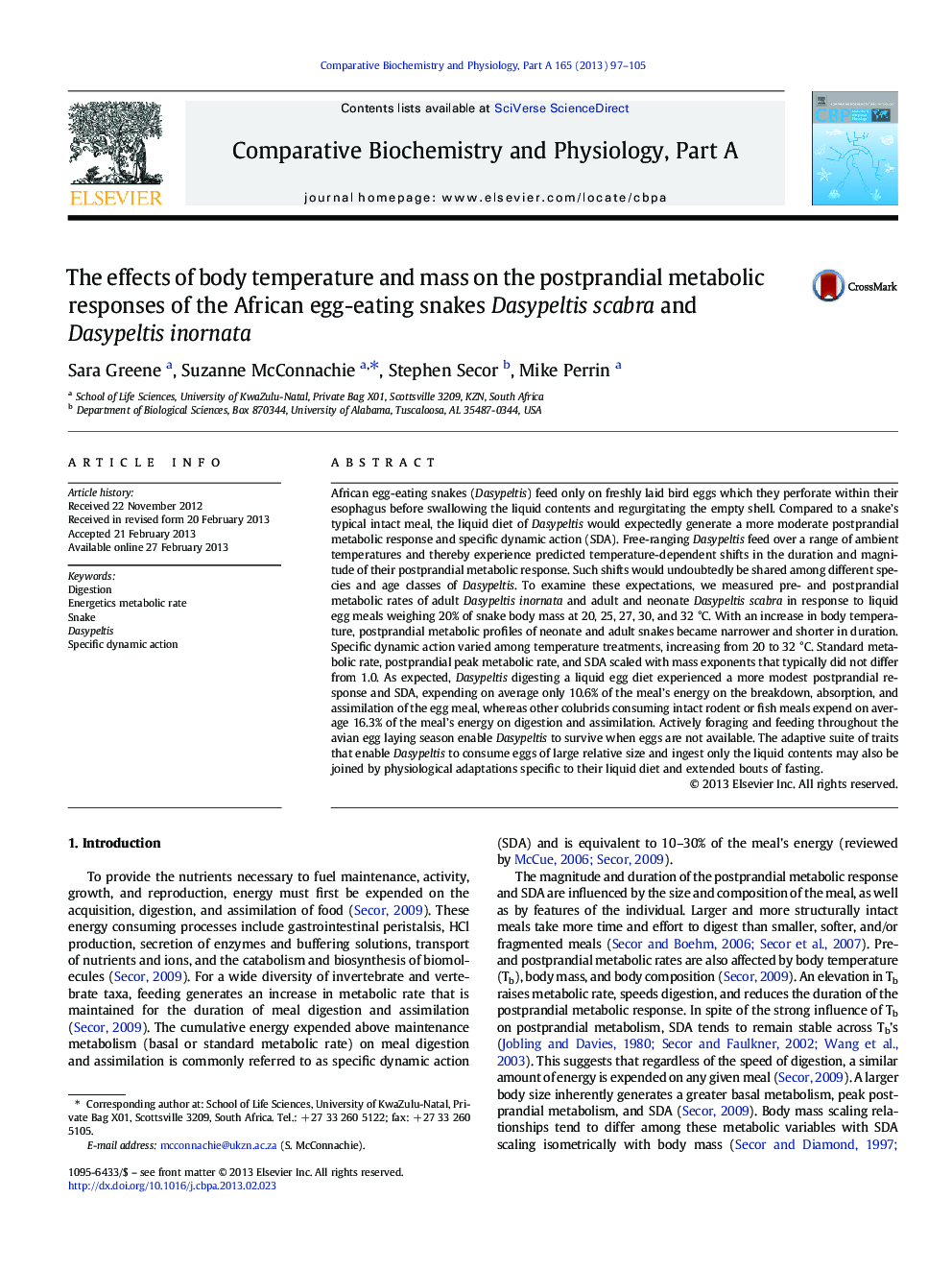| Article ID | Journal | Published Year | Pages | File Type |
|---|---|---|---|---|
| 10818846 | Comparative Biochemistry and Physiology Part A: Molecular & Integrative Physiology | 2013 | 9 Pages |
Abstract
African egg-eating snakes (Dasypeltis) feed only on freshly laid bird eggs which they perforate within their esophagus before swallowing the liquid contents and regurgitating the empty shell. Compared to a snake's typical intact meal, the liquid diet of Dasypeltis would expectedly generate a more moderate postprandial metabolic response and specific dynamic action (SDA). Free-ranging Dasypeltis feed over a range of ambient temperatures and thereby experience predicted temperature-dependent shifts in the duration and magnitude of their postprandial metabolic response. Such shifts would undoubtedly be shared among different species and age classes of Dasypeltis. To examine these expectations, we measured pre- and postprandial metabolic rates of adult Dasypeltis inornata and adult and neonate Dasypeltis scabra in response to liquid egg meals weighing 20% of snake body mass at 20, 25, 27, 30, and 32 °C. With an increase in body temperature, postprandial metabolic profiles of neonate and adult snakes became narrower and shorter in duration. Specific dynamic action varied among temperature treatments, increasing from 20 to 32 °C. Standard metabolic rate, postprandial peak metabolic rate, and SDA scaled with mass exponents that typically did not differ from 1.0. As expected, Dasypeltis digesting a liquid egg diet experienced a more modest postprandial response and SDA, expending on average only 10.6% of the meal's energy on the breakdown, absorption, and assimilation of the egg meal, whereas other colubrids consuming intact rodent or fish meals expend on average 16.3% of the meal's energy on digestion and assimilation. Actively foraging and feeding throughout the avian egg laying season enable Dasypeltis to survive when eggs are not available. The adaptive suite of traits that enable Dasypeltis to consume eggs of large relative size and ingest only the liquid contents may also be joined by physiological adaptations specific to their liquid diet and extended bouts of fasting.
Related Topics
Life Sciences
Biochemistry, Genetics and Molecular Biology
Biochemistry
Authors
Sara Greene, Suzanne McConnachie, Stephen Secor, Mike Perrin,
